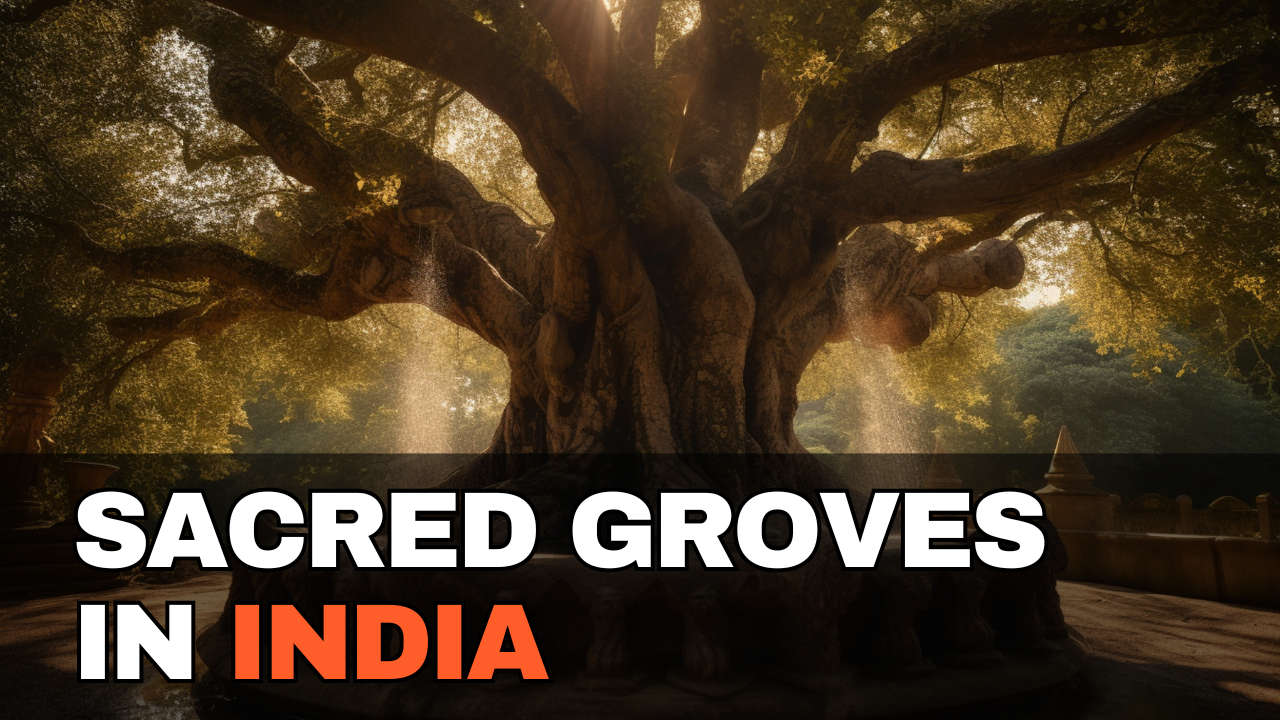Sacred Groves in India: Protecting Nature, Culture, and Community Rights
Introduction: The Ancient Forests of India
Sacred groves are patches of forest land that have been protected by local communities for centuries. These forests are often believed to be homes of deities, spirits, or ancestral beings, and because of these beliefs, they have remained largely untouched and well-preserved. The practice of maintaining sacred groves is an ancient tradition, deeply embedded in the culture of many communities across India. Unlike other forests, where trees may be cut for wood or land may be cleared for farming, sacred groves are kept intact due to religious and cultural prohibitions. Many people believe that harming these forests will bring misfortune upon the village, ensuring that they are naturally protected without the need for external enforcement.
India is home to an estimated 100,000 to 150,000 sacred groves, the largest number in the world. Different communities refer to these forests by different names. In Rajasthan, they are called Orans or Malvan, while in Karnataka, they are known as Devara Kadus. In Kerala, they are referred to as Sarpa Kavus, and in Meghalaya, they are known as Law Kyntang.
Despite these different names, the purpose of sacred groves remains the same—to serve as natural sanctuaries for both spiritual and ecological preservation. Over time, these forests have played a crucial role in preserving biodiversity, maintaining water cycles, and protecting rare medicinal plants. However, despite their rich history, sacred groves now face a serious threat from legal and governmental policies that could take control away from the communities that have safeguarded them for centuries.
The Rich Biodiversity of Sacred Groves
One of the most important roles of sacred groves is their contribution to biodiversity conservation. Because they have remained undisturbed for centuries, these forests have become safe havens for many rare and endangered species. While commercial forests are often cleared or heavily used for timber and agriculture, sacred groves remain rich in plant and animal life. Studies have shown that in areas where deforestation has reduced natural habitats, sacred groves serve as refuges for species that might otherwise go extinct.
For example, in Meghalaya, sacred groves are known to protect rare orchids and endangered species such as the Hoolock Gibbon, a species of ape that is now struggling to survive in other parts of India. In Rajasthan’s Orans, the Khejri tree (Prosopis cineraria) flourishes, despite being endangered elsewhere due to desertification and logging. The Western Ghats’ sacred groves are home to many tropical rainforest species that have disappeared from surrounding forests due to deforestation. These examples highlight the crucial role sacred groves play in protecting biodiversity, making their preservation all the more important.
Beyond wildlife, sacred groves are also home to medicinal plants that have been used in traditional healing practices for generations. In Odisha, for example, tribal communities rely on sacred groves for herbs that can treat fevers, stomach illnesses, and infections. Many of these plants do not grow anywhere else because they require the unique conditions that sacred groves provide. If these forests are lost, communities may also lose valuable knowledge of natural medicine that has been passed down for centuries.
Sacred Groves and Water Conservation
Sacred groves also play a vital role in water conservation. Many groves are located near natural springs, ponds, or rivers, making them essential for groundwater recharge. Trees and plants in these groves help retain rainwater, preventing it from running off too quickly and ensuring that it slowly seeps into the ground to replenish wells and streams. In a country like India, where water scarcity is a major issue, sacred groves provide a natural solution to water shortages.
These forests also help prevent soil erosion. In many parts of India, deforestation has led to dry, barren land where crops struggle to grow. However, in areas where sacred groves remain, the soil is rich and fertile because trees hold the soil together with their roots. This helps prevent landslides, droughts, and floods, which can be disastrous for local communities.
Furthermore, sacred groves play an important role in regulating local climates. Trees in these forests absorb carbon dioxide from the air, helping to reduce the effects of climate change. Because they are protected from logging and clearing, they serve as natural carbon sinks, keeping the air cleaner and cooler. Without them, the temperature in many regions could rise significantly, making agriculture and daily life even more challenging.
The Supreme Court’s Ruling and Its Impact
On December 18, 2024, the Supreme Court ordered the Rajasthan Forest Department to map all sacred groves and classify them as community reserves under the Wildlife Protection Act (WLPA), 1972. This means that these groves would come under government control, rather than remaining under the protection of the communities that have safeguarded them for generations. While the court claims this move is meant to protect the groves more effectively, many experts and communities fear that it will take away the rights of local people and contradict the Forest Rights Act (FRA), 2006.
The FRA, which was passed to correct historical injustices against tribal and forest-dwelling communities, recognises their traditional rights over forests. It allows them to manage forests in ways that align with their cultural practices, rather than under government-imposed conservation rules. By classifying sacred groves as community reserves, the Supreme Court has placed them under the jurisdiction of the Forest Department, taking away the authority of local communities. This is a direct violation of the FRA, which states that forests traditionally managed by communities should remain under their control.
This move is particularly concerning because past experiences have shown that government control over forests often leads to mismanagement and conflict. In states like Chhattisgarh and Madhya Pradesh, when forests were classified as protected areas, local communities were forcibly evicted from their lands. Without the communities to safeguard them, these forests became vulnerable to illegal logging and encroachment. If the same happens with sacred groves, it could lead to the loss of both biodiversity and cultural heritage.
Why Local Communities Should Continue to Manage Sacred Groves
The best way to protect sacred groves is to leave them under community management, rather than transferring them to the government. Communities have proven for centuries that they can manage these forests effectively, using traditional knowledge and conservation practices that have worked for generations. In contrast, government-controlled conservation efforts often fail due to lack of understanding of local ecosystems.
One way to strengthen the protection of sacred groves without taking them away from communities is to formally recognise them under the FRA, rather than the WLPA. This would allow communities to receive legal protection and financial support, without losing control over their sacred lands. Additionally, initiatives like community-led ecotourism and conservation programs could help provide economic benefits while ensuring that the forests remain protected.
Conclusion
Sacred groves are not just forests; they are living cultural and ecological treasures that provide food, medicine, water, and climate regulation. The Supreme Court’s decision to classify them as community reserves under the WLPA may seem like a step toward conservation, but it undermines the traditional rights of the communities that have protected them for generations. Instead of removing community control, the government should support local conservation efforts and legally protect sacred groves under the FRA.
If sacred groves are to survive for future generations, their protection must be a shared responsibility between communities, conservationists, and policymakers—one that respects both nature and the people who depend on it.
Subscribe to our Youtube Channel for more Valuable Content – TheStudyias
Download the App to Subscribe to our Courses – Thestudyias
The Source’s Authority and Ownership of the Article is Claimed By THE STUDY IAS BY MANIKANT SINGH




